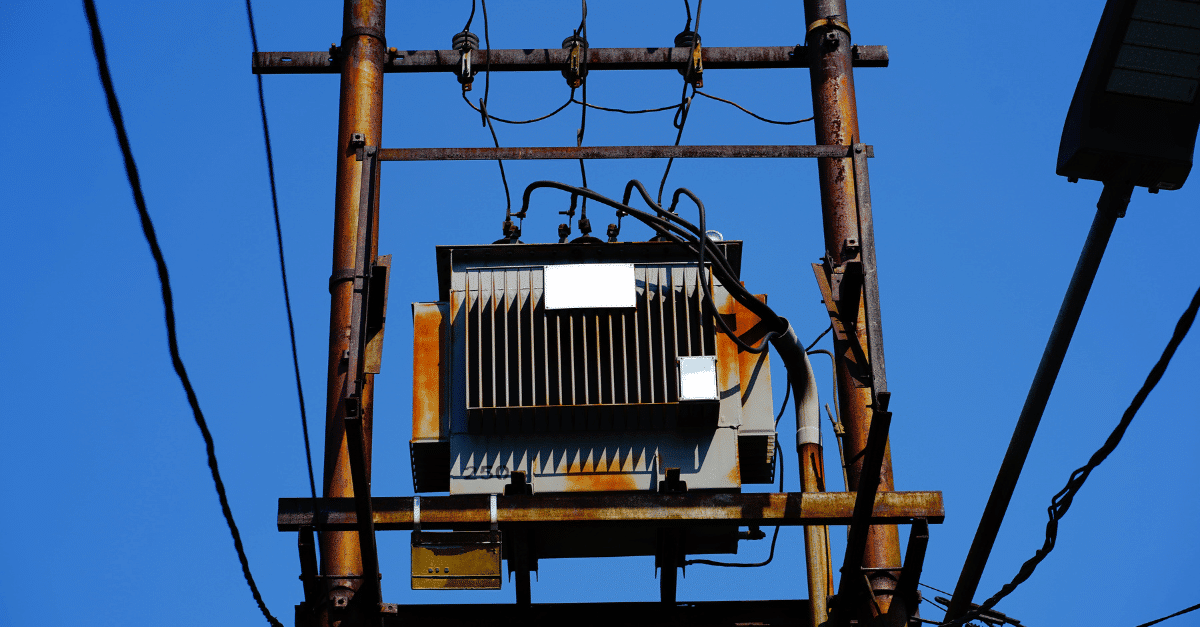An overhead line Fault Passage Indicator (FPI) is a device used in electrical power distribution systems to detect and locate faults on power lines. When a fault occurs, such as a short circuit or a power outage, the FPI detects the resulting change in current and transmits a signal to a central control system.
An FPI (Fault Passage Indicator) works by detecting changes in the current flowing through a power line. When a fault occurs on the line, such as a short circuit or an overcurrent, the current level changes. The FPI detects this change in current and triggers a signal that indicates a fault has occurred.
An FPI (Fault Passage Indicator) is designed to detect a range of events or faults that can occur on a power line. These can include:
- Short circuits: A short circuit occurs when two or more conductors come into contact, causing a sudden increase in current flow. FPIs can detect this increase in current flow and trigger an alarm to indicate the location of the fault.
- Ground faults: A ground fault occurs when a power line comes into contact with the ground, causing a sudden increase in current flow. FPIs can detect this increase in current flow and trigger an alarm to indicate the location of the fault.
- Load interruptions: A load interruption occurs when there is a sudden loss of load on a power line, which can be caused by a fault or a switch opening. FPIs can detect load interruptions and trigger an alarm to indicate the location of the fault.
Safegrid's Grayhawk enables a modern solution with advanced features for overhead line monitoring
Safegrid’s Grayhawk is a wireless Fault Passage Indicator (FPI) for overhead line monitoring that offers several advantages compared to traditional FPIs. Here are some ways that the functionality of Safegrid’s Grayhawk differs from traditional FPIs:
Wireless Communication:
Safegrid’s Grayhawk communicates wirelessly with Grid GuardianTM that is capable of transmitting fault information to the utility control center. This eliminates the need for hard-wired communication infrastructure, reducing installation and maintenance costs.
Highly Accurate:
Safegrid’s Grayhawk uses highly accurate and reliable high-frequency measuring technology to sense minor disruptions in the overhead power lines with maximum accuracy and speed. This allows Grid Guardian to do quicker and more accurate fault detection and location.
Cloud-Based Monitoring and Analytics:
Safegrid’s Grayhawk works with the entirely cloud-based GridGuardian™ system, which is a deep learning analytic system for fault prediction and preventive grid maintenance. This allows utilities to analyze data in real-time and make more informed decisions about grid maintenance and repairs.
Predictive Maintenance:
By using data analytics and machine learning, Safegrid’s Grid Guardian can predict potential faults before they occur based on the data collected by Grayhawk, allowing utilities to perform preventive maintenance to avoid costly failures.
Overall, Safegrid’s Grayhawk together with Grid Guardian offers several advanced features compared to traditional FPIs, including wireless communication, highly accurate fault detection, cloud-based monitoring and analytics, and predictive maintenance capabilities. These features can help utilities to reduce downtime, increase system reliability, and reduce operating costs.
How is Safegrid's Intelligent Grid System different?
Safegrid’s Intelligent Grid System is a more advanced and sophisticated technology compared to traditional FPIs (Fault Passage Indicators). While both technologies are used for fault detection in power distribution systems, Safegrid offers additional features and capabilities that set it apart from traditional FPIs.
One of the key differences between Safegrid’s and traditional FPIs is that Safegrid is a more comprehensive and integrated system that combines various devices and sensors, including FPIs, to provide a more holistic view of the power distribution network. In addition to FPIs, the Grayhawk senses current, temperature, and other parameters, which are used to monitor and analyze the behavior of the power grid in real-time.
Safegrid also leverages advanced analytics and machine learning algorithms to analyze the data collected from the various sensors and devices, which helps to detect and predict faults before they occur. This predictive capability is a significant improvement over traditional FPIs, which only detect faults after they have occurred.
Another key difference is that Safegrid can provide more detailed and accurate fault location information compared to traditional FPIs. Safegrid can leverage the data collected from multiple sensors and devices to pinpoint the exact location of a fault, which can help to reduce repair times and improve overall system reliability.
Finally, Safegrid can enable utilities to perform advanced network analysis and optimization, which can help to improve system efficiency and reduce operating costs. This is possible because the system can collect and analyze large amounts of data about the power distribution network, including power flows, and asset utilization, among others.
What benefits does Safegrid's Intelligent Grid System provide?
Utilities can benefit in several ways from the features that Safegrid’s Intelligent Grid System (IGS) provides compared to traditional FPIs (Fault Passage Indicators). Here are some examples:
- Improved Fault Detection: Safegrid’s IGS provides more comprehensive and integrated monitoring of the power distribution network, including the use of various sensors and devices in addition to FPIs. This means that utilities can detect faults more quickly and accurately, which can reduce downtime, minimize the impact on customers, and improve overall system reliability.
- Predictive Maintenance: Safegrid’s IGS uses advanced analytics and machine learning algorithms to analyze the data collected from the various sensors and devices, which can help predict faults before they occur. By identifying potential issues early, utilities can perform maintenance proactively, reducing the likelihood of costly equipment failures and minimizing the need for reactive repairs.
- Faster Fault Location: Safegrid’s IGS can provide more detailed and accurate fault location information than traditional FPIs. By pinpointing the exact location of a fault, utilities can reduce the time needed to locate and repair the fault, minimizing the duration of the outage and improving overall system reliability.
- Enhanced Data Visualization: Safegrid’s IGS provides more sophisticated data visualization tools compared to traditional FPIs. This means that utilities can better understand and interpret the data collected from the various sensors and devices, which can lead to more informed decisions about network maintenance, upgrades, and investments.
In summary, the features that Safegrid’s IGS provides compared to traditional FPIs can help utilities improve fault detection, reduce downtime, perform predictive maintenance, and make more informed decisions about system upgrades and investments, all of which can improve overall system reliability and reduce operating costs.

